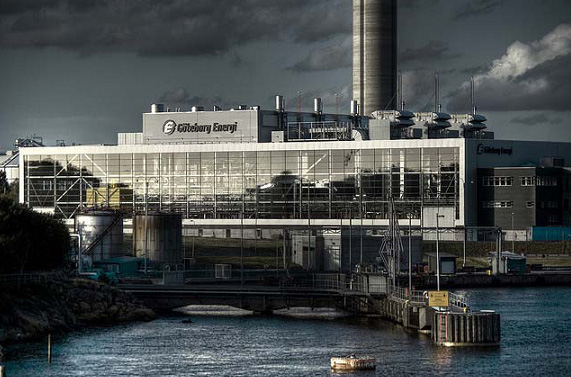Reminiscing my visits of Swedish power plants
This November brought back reflections of my two study visits of Swedish power plants. The visits were done during the same months of previous two years while pursuing higher studies at a Swedish university. They were the Älvkarleby Hydroelectric Power Station and natural gas based Rya Combined Heat and Power (CHP).
What captivated me about the 125 MW Älvkarleby dam based hydropower station was that it was amongst the first power plants established in Sweden dating back to 1915. This powered the initial industrial growth in the country. It is located eight kilometers (km) upstream from the Dalälven River’s outflow into the Baltic Sea. It has a capacity utilization of 46 percent, which is reasonably good enough. Annual power generated is around 510 Million Units and this supplies electricity to around one lakh (100,000) homes in Sweden.
Exhibit 1: Älvkarleby Hydroelectric Power Station, Sweden
 Source: Vattenfall (http://www.flickr.com/photos/vattenfall/3588593216/sizes/m/in/photostream/ )
Source: Vattenfall (http://www.flickr.com/photos/vattenfall/3588593216/sizes/m/in/photostream/ )
The area around Älvkarleby hydropower station is planned for tourism. It is common to see people biking along the river paths. It also provides opportunities for leisure activities along the banks of the river like wind shelter huts with fireplaces for picnics. The owner and operator of the unit, Vattenfall AB, one of the biggest utilities in Europe, states that downstream of the power station 15 tonnes of salmon and sea trout are caught each year. This indicates the care that the power plant design engineers must have taken to ensure minimum affect on fish species.
The 261 MWe Rya CHP unit occupies my thought with regard to the technological advancement in engineering achieved by the industrialized world. Operated by the municipality of Gothenburg, it has just three employees stationed at any given moment of time for operating this massive power plant, primarily to monitor the self-operating unit. The project was executed turnkey by Siemens AG. The waste heat is used for district heating of homes, rather than simply being released to the atmosphere or sea (as is done currently in India).
Exhibit 2: Rya Combined Heat and power plant, Gothenburg Energi, Sweden

Source: Kritisk Massa, http://www.flickr.com/photos/26527162@N04/3847283215/
The power plant comprises of three gas turbines of 45 MWe each. Apart from this, there is a boiler (called Heat Recovery Steam Generator) generating steam from the hot flue gases of the gas turbine. The steam from the boiler is fed to a 141 MW turbogenerator. The steam turbine is mounted on a multishaft to provide with operational flexibility, i.e. there is a provision of additional turbine if the demand increases in future
The CHP unit is fitted with low NOx burners for operation under dual fuel (Natural gas and oil). Rya power plant meets around 35 per cent of district heating and 30 per cent of electricity needs of Gothenburg city in Sweden.
The plant is operational since 2006 and has an overall operating thermal efficiency of 92 per cent. These efficiency levels are something to reckon with and show how CHP technology can help use natural resources in the best efficient way.
It is interesting to note the pivotal role these advanced technologies play towards reducing resource and carbon footprint on the planet while still supplying energy (and comfort) needs of the human society.
